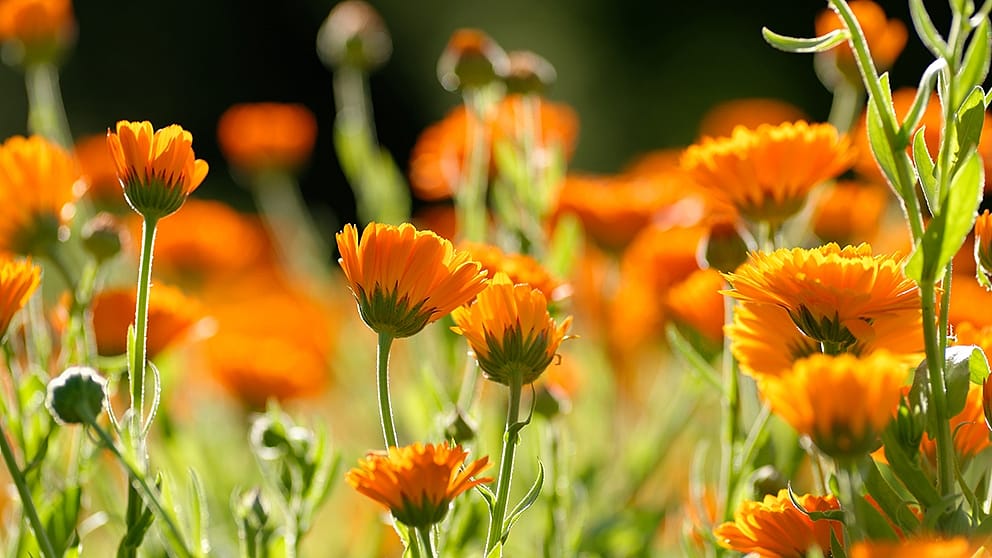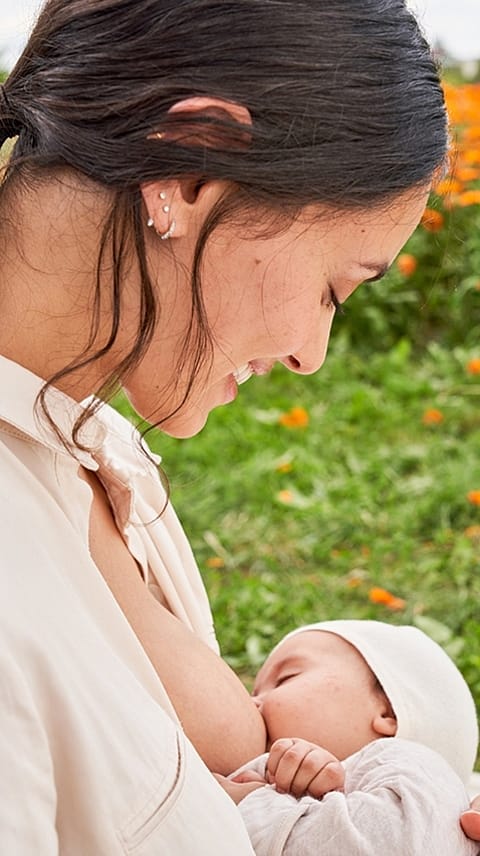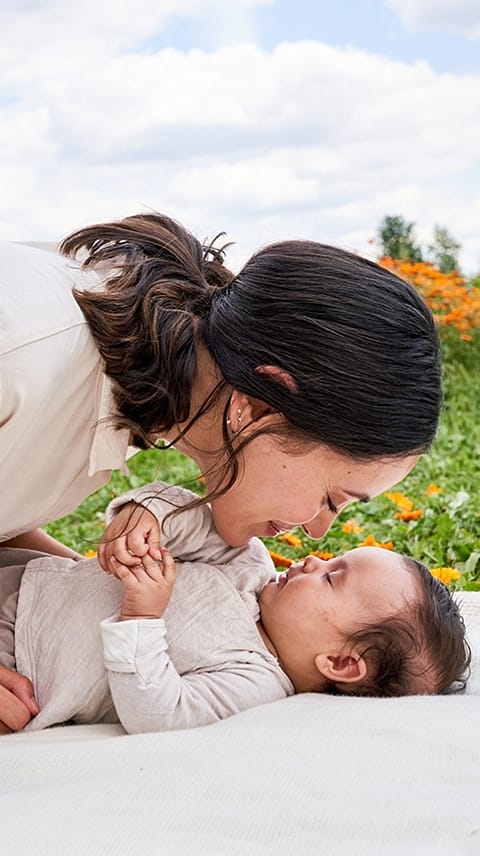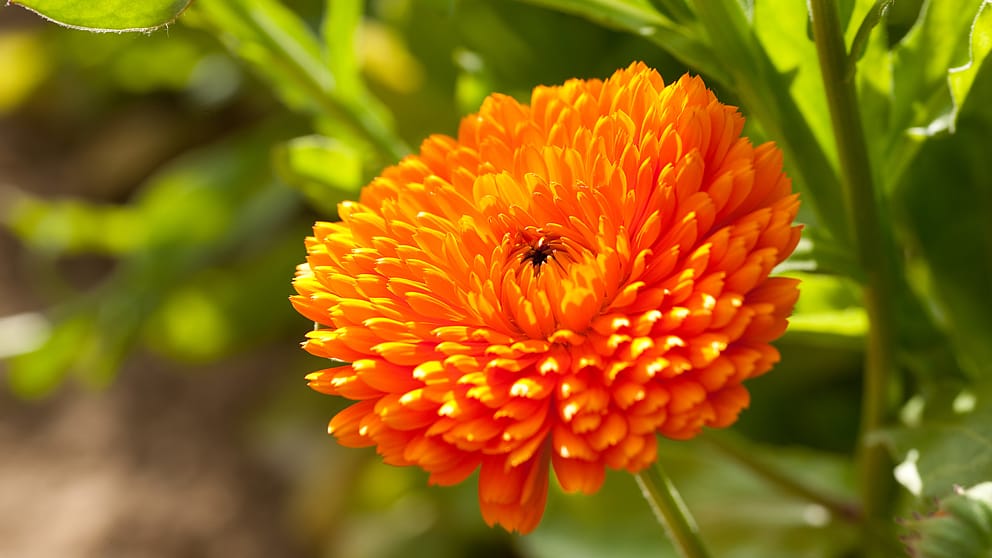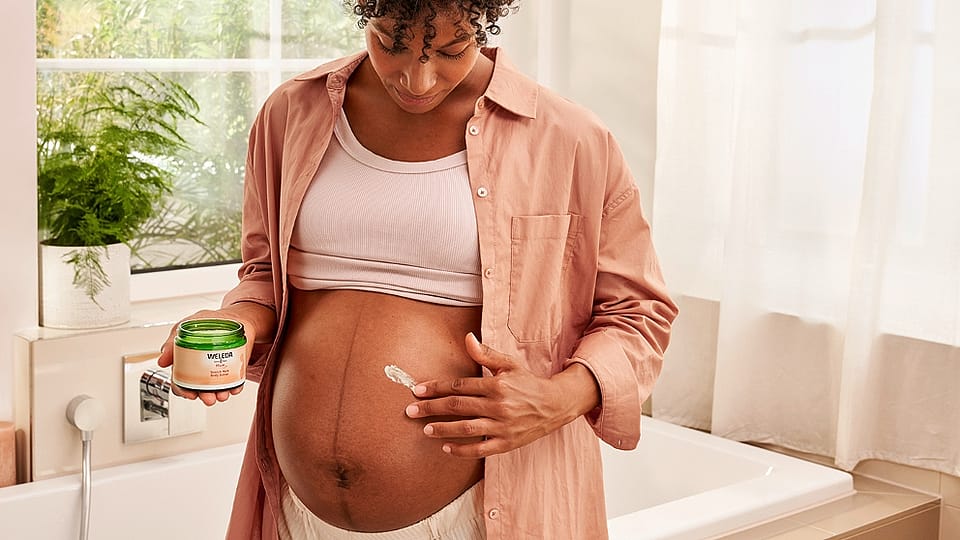Nipple Balm: The Ultimate Solution for Breastfeeding Mothers
The breastfeeding journey brings profound connection between mother and baby—a natural continuation of the nurturing relationship that began during pregnancy. Yet this beautiful bond often comes with physical challenges, particularly for delicate nipple skin that may not be accustomed to such frequent attention. For generations, mothers have sought gentle, effective solutions to support skin comfort during this important time.
Understanding Breastfeeding's Effects on Delicate Skin
The first weeks of breastfeeding often bring significant adjustment as your body meets your baby's needs and rhythms. Your nipples, in particular, face new demands that can challenge even the most resilient skin.
Natural Changes During Breastfeeding
During breastfeeding, your nipples naturally experience:
- Frequent moisture exposure: Alternating between wet and dry states
- Mechanical stress: From your baby's suckling motion
- Hormone-related sensitivity: Changes in elasticity and sensation
- Potential disruption of natural barrier: Especially during initial adjustment
Common Nipple Concerns During Breastfeeding
Many mothers experience some degree of nipple discomfort, particularly in the early weeks:
Tenderness and Sensitivity
Often most noticeable in the first minutes of feeding or in between sessions, this common experience typically improves as breastfeeding becomes established.
Dryness and Flaking
The frequent wet-dry cycle can challenge the skin's natural moisture balance, sometimes leading to flaking or tightness.
Cracking and Soreness
Sometimes nipples develop small fissures or cracks that can cause discomfort, particularly at the beginning of feeds.
Engorgement Effects
When breasts become very full, the skin stretches and may become more vulnerable to stress during feeding.
Traditional wisdom recognises that these challenges respond well to gentle, consistent care that works with your body's natural healing processes rather than overriding them.
The Natural Approach to Nipple Care
Long before commercial products lined store shelves, mothers relied on simple, natural remedies to support nipple comfort during breastfeeding. This wisdom forms the foundation for truly effective nipple balms today.
Traditional Ingredients with Time-Tested Benefits
Nature offers remarkable solutions that have supported nursing mothers for generations:
Calendula (Pot Marigold)
This golden flower has been used for centuries to soothe and protect delicate skin. Traditionally prepared as an infused oil, calendula offers gentle support without harsh intervention.
Beeswax
Creating a breathable protective layer, beeswax helps shield sensitive skin while allowing natural processes to continue. Unlike petroleum-based alternatives, it works in harmony with the body's own systems.
Lanolin
Derived from sheep's wool, this natural substance shares remarkable similarities with human skin lipids. It helps maintain moisture balance without blocking pores or interfering with natural skin function.
Plant Oils
Oils like almond, olive, and sunflower provide nurturing moisture while supporting the skin's natural barrier function. Their molecular structure allows for beneficial interaction with the skin rather than simply sitting on the surface.
These natural elements work together to support your body's own healing wisdom rather than imposing artificial solutions.
The Philosophy of Gentle Support
Traditional nipple care follows several key principles:
- Working with natural processes: Supporting rather than suppressing the skin's own healing abilities
- Minimal intervention: Using only necessary, beneficial ingredients
- Whole-system approach: Recognising the connection between overall wellbeing and skin health
- Preventative care: Establishing nurturing routines before problems develop
This gentle approach reflects the understanding that your body knows how to care for itself—it simply needs support during times of change and transition.
What Makes an Effective Natural Nipple Balm
Not all nipple balms are created equal. Understanding what distinguishes a truly effective, natural option helps you make choices that support both your comfort and your baby's wellbeing.
Essential Qualities of Supportive Nipple Balm
A truly beneficial nipple balm should offer:
Safe for Baby
Since your baby will inevitably ingest small amounts, ingredients should be food-grade and require no removal before feeding. Weleda Nipple Balm is formulated with ingredients so pure there's no need to wipe it off before nursing.
Truly Natural Composition
Plant-based ingredients that work in harmony with the body's processes provide support without introducing synthetic compounds. Look for balms with certified natural status like NATRUE certification.
Breathable Protection
Unlike petroleum-based products that create an occlusive barrier, natural balms allow skin to breathe while still providing protection. This balance is crucial for healing and comfort.
Support for Natural Healing
Effective balms don't just mask symptoms—they create conditions that support the skin's own remarkable healing abilities through carefully selected ingredients.
Key Ingredients to Look For
Certain natural ingredients offer particular benefits for nursing mothers:
Calendula Extract
Traditionally used to soothe and support delicate skin, calendula brings gentle care to sensitive nipples. Weleda grows this beneficial plant biodynamically in our own gardens, ensuring the highest quality and potency.
Organic Beeswax
Creating a breathable protective layer, beeswax helps shield delicate skin from further stress without interfering with natural processes.
Plant Oils
Carefully selected oils like almond and olive provide nourishment without heaviness, supporting skin resilience through beneficial fatty acids and vitamins.
Lanolin (for some mothers)
While some mothers prefer lanolin-free options, high-quality, ultra-purified lanolin can offer significant benefits for those who tolerate it well.
What to Avoid
Equally important is understanding what doesn't belong in a nipple balm:
Synthetic Preservatives
Ingredients like parabens have no place in products that may be ingested by your baby. Natural preservation systems provide safety without introducing concerning chemicals.
Artificial Fragrances
Synthetic scents often contain undisclosed chemicals and may cause sensitivity in both mother and baby. Truly natural balms rely on the subtle, inherent scents of their plant ingredients.
Petroleum Derivatives
Ingredients like mineral oil and petrolatum create an artificial barrier that doesn't work in harmony with the skin's natural functions. Plant-based alternatives offer more harmonious support.
Unnecessary Additives
The best formulations are often the simplest, containing only ingredients that serve a specific beneficial purpose.
Using Nipple Balm Effectively: A Holistic Approach
How and when you use nipple balm significantly affects its benefits. Incorporating it into your routine enhances both its effectiveness and your breastfeeding experience.
Preventative Care: Before Problems Develop
Traditional wisdom recognises that the best approach begins before difficulties arise:
From the Start
Begin applying small amounts of nipple balm after feeds from the first days of breastfeeding, rather than waiting for discomfort to develop.
After Feeding Application
Apply a thin layer after each feeding, when nipples are already slightly moist, to help seal in natural moisture.
Consistent Care
Regular, gentle attention helps maintain skin resilience through the adaptation process of early breastfeeding.
This preventative approach reflects the traditional understanding that supporting natural balance is easier than correcting imbalance once it develops.
Application Techniques
How you apply nipple balm affects both its effectiveness and your comfort:
Clean Hands First
Always begin with clean hands to avoid introducing bacteria to sensitive areas.
Warming the Balm
Take a moment to warm a small amount between your fingers, making application more comfortable and absorption more effective.
Gentle Application
Use light, gentle pressure rather than vigorous rubbing, respecting the sensitivity of the area.
Minimal Amount
A thin, even layer provides protection without creating excess that needs to be removed before feeding.
Complementary Care Practices
Nipple balm works best as part of a holistic approach to breastfeeding comfort:
Air Drying
Allowing nipples to air dry briefly after feeding, before applying balm, helps maintain healthy skin environment.
Breast Milk Application
Your milk contains natural healing properties—expressing a drop and allowing it to dry on nipples before applying balm can enhance comfort.
Position Variation
Changing breastfeeding positions helps distribute pressure differently, reducing stress on any one area of the nipple.
Proper Latch Support
Breastfeeding should not hurt – if you are in pain get help from someone who really understands breastfeeding. Working with a lactation consultant to ensure optimal latch can prevent many nipple concerns from developing or worsening. Your local community health centre or support groups such as the Australian Breastfeeding Association can be really helpful.
Special Situations
Some circumstances call for adapted approaches:
For Very Sensitive Nipples
Consider applying balm about 15 minutes before feeding to allow excess to absorb, though with truly natural balms like Weleda Nipple Balm, this step is often unnecessary.
During Active Healing
For already irritated nipples, slightly more generous application between feedings provides extra support for the healing process.
When Using Breast Pumps
Apply a small amount after pump sessions, which can sometimes cause different types of stress to nipple skin than direct breastfeeding.
Beyond the Balm: Holistic Supportfor Breastfeeding Mothers
Nourishment from Within
What you consume affects both your milk production and your skin's resilience:
Hydration
Abundant water intake supports both milk production and skin elasticity. Traditional wisdom suggests drinking a small glass of water during each feeding session.
Skin-Supporting Nutrients
Foods rich in essential fatty acids (like walnuts, flaxseeds, and fatty fish) provide building blocks for skin health, while zinc-rich foods (such as pumpkin seeds and legumes) support tissue repair.
Traditional Galactagogues
Plants traditionally used to support milk production, such as fennel, fenugreek, and oats, have nourished nursing mothers across generations.
Rest and Stress Reduction
Your skin's healing abilities are intimately connected to your overall state:
Sleep Opportunities
Finding moments to rest when your baby sleeps helps support your body's natural repair processes.
Mindful Breathing
Simple breathing practices during feeding sessions can reduce tension that might contribute to nipple discomfort.
Support Systems
Connecting with other mothers and accepting help with daily tasks provides emotional resources that support physical wellbeing.
Environmental Considerations
Your surroundings affect your skin's response during breastfeeding:
Gentle Fabrics
Choose soft, natural fibers like cotton for bras and clothing that contact your nipples.
Breathable Support
Ensure nursing bras provide proper support without compression that might worsen soreness.
Pad Choices
If using nursing pads, opt for unbleached, natural fiber options and change them frequently to maintain a healthy moisture balance.
Frequently Asked Questions
Is nipple balm safe for my baby?
When choosing a truly natural nipple balm like Weleda Nipple Balm, you're selecting a product formulated with ingredients so pure they require no removal before nursing. The food-grade plant oils, organic beeswax, and carefully prepared botanical extracts are safe for your baby to ingest in the small amounts that might transfer during feeding. This differs significantly from petroleum-based products or those containing synthetic additives, which often require removal before nursing.
When should I start using nipple balm?
Traditional wisdom suggests beginning gentle preventative care from the first days of breastfeeding, rather than waiting for problems to develop. Starting with small applications after each feeding helps maintain skin resilience during the initial adjustment period when sensitivity is most common. This preventative approach often helps mothers avoid more significant discomfort later in their breastfeeding journey.
How often should I apply nipple balm?
For most mothers, applying a thin layer after each feeding provides optimal support. This timing works with your body's natural moisture patterns, sealing in hydration when nipples are still slightly moist from feeding. During periods of increased sensitivity or healing, you might consider additional applications between feedings. Always follow your skin's responses, adjusting frequency based on your unique needs.
What's the difference between natural nipple balms and petroleum-based alternatives?
Natural balms like Weleda Nipple Balm work in harmony with your skin's own processes, creating a breathable protective layer that supports natural function. Their plant-based ingredients can be metabolized by the body and offer additional benefits beyond basic protection. Petroleum-based alternatives create an occlusive barrier that sits on the skin's surface, potentially interfering with the skin's natural processes. Additionally, natural balms often require no removal before feeding, simplifying care routines for busy mothers.
Can nipple balm help with already cracked or very sore nipples?
Yes, natural nipple balm can be particularly beneficial for nipples that are already experiencing discomfort. The gentle protective layer helps shield sensitive areas from further stress while supporting your body's natural healing processes. For already irritated nipples, you might apply balm more frequently or in slightly more generous amounts between feedings. However, persistent or worsening soreness, especially if accompanied by signs of infection, warrants consultation with a healthcare provider or lactation consultant.
Embracing the Breastfeeding Journey
The breastfeeding relationship offers profound nourishment that extends far beyond physical sustenance. By supporting your body with gentle, natural care during this important time, you create space for this relationship to flourish despite initial challenges.
Remember that your body possesses remarkable wisdom and healing capabilities. Natural nipple care doesn't replace this wisdom—it supports and honors it, creating conditions where your own natural processes can function optimally. With consistent, thoughtful attention and truly natural supporting products, most initial breastfeeding discomforts resolve as your body adapts to this new role.
At Weleda, our century of experience creating natural skincare has taught us that gentle support often provides the most profound results. When we work with nature's rhythms rather than against them, we create harmony that benefits both mother and baby. Our Nipple Balm reflects this philosophy, offering traditional ingredients prepared with modern understanding to support your unique breastfeeding journey.
May your nursing relationship be filled with moments of deep connection and joy—a natural expression of the profound bond you share with your baby.
For more specific guidance about incorporating Weleda's certified natural products into your postpartum care routine, explore our Mother & Baby Care collection, designed to support both mother and child during this precious time.


